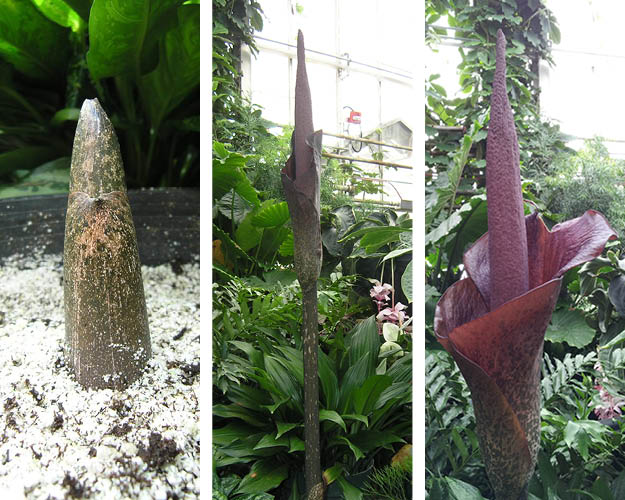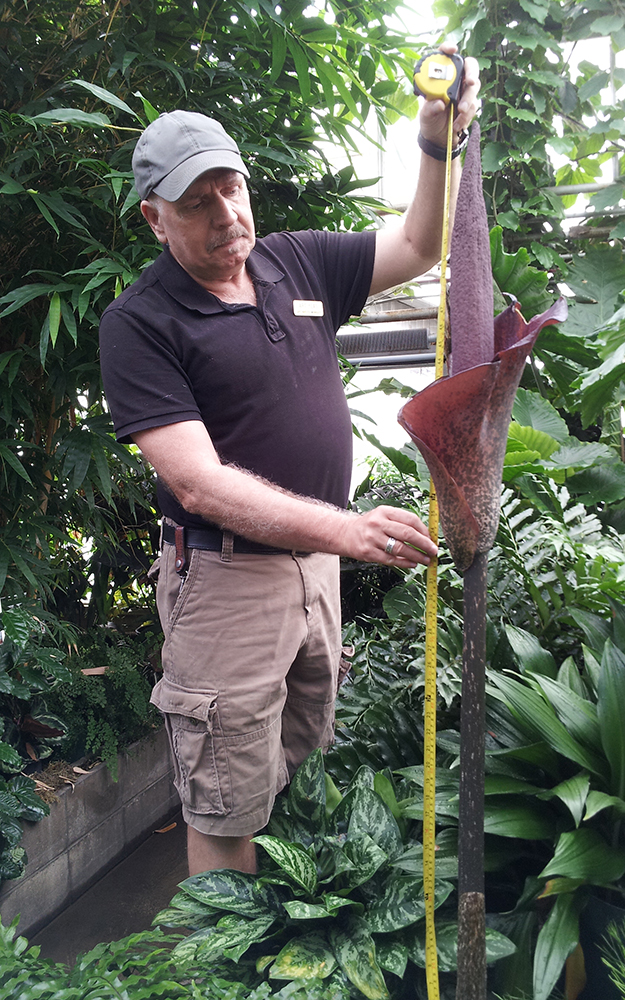El Diablo! Devil’s Tongue flower comes to life in Biology Greenhouse

'I do not believe exceptionally large specimens of this plant are common in our part of the world. Our flower is growing from a corm weighing 10 pounds, and the bud was growing six-eight inches every day,' said greenhouse technician Arthur Yeas. Far right: the Devil's Tongue flower on Thursday morning, now fully bloomed.
A rare plant at the McMaster Biology Greenhouse is finally showing its true colours (and odours), and may not bloom for another five years.
The towering Devil’s Tongue, also known as a Voodoo Lily or Amorphophallus konjac, is native to tropical Indonesia and has the dubious distinction of being one of the smelliest plants on earth.
The flowering at McMaster was a remarkable surprise.
“One of these plants flowered at the Royal Botanical Gardens a few years ago, but it is a very rare occurrence. Our plant may not bloom for another five years or so,” said greenhouse technician Arthur Yeas.
“I do not believe exceptionally large specimens of this plant are common in our part of the world. Our flower is growing from a corm weighing 10 pounds, and the bud was growing six-eight inches every day.”
Despite its pungent corpse-like aroma, the Devil’s Tongue has been used in food and medicine for more than 1,500 years.
The Japanese make a popular dish from the plant known as konnyaku. Those who eat the dish are said to be devouring the devil’s tongue.
In medical circles, it is an important ingredient in weight loss products such as Lipozene and PGX Daily. Studies show it can reduce bad cholesterol and raise good cholesterol in the blood. It can also stabilize blood sugar levels, and may play a role in managing diabetes.
For those interested in seeing the Devil’s Tongue and other rare plants, there is no charge to visit the McMaster Biology Greenhouse. The facility is located just west of Hamilton Hall, beside the Refectory.
The Biology Greenhouse is open on Thursday, Aug. 28 until 6 p.m., and on Friday Aug. 29 from 6:45 a.m. to 6 p.m. Email yeasart@mcmaster.ca to arrange a group tour.
Follow along on Twitter at @MACGreenhouse.
Below: Biology Greenhouse technician Arthur Yeas measures the imposing Devil’s Tongue on Thursday morning. The plant currently measures 58 inches.



